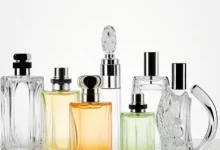Perfumer’s Workbench: The Alchemist’s Toolkit for Crafting Signature Scents
Inside the Creative Process Where Science Meets Artistry

Content:
The world of fragrance is one of evocative memories, powerful emotions, and invisible artistry. Behind every captivating scent, from the simplest eau de cologne to the most complex haute parfumerie, lies a meticulous creative process centered around a crucial, often unseen, space: the Perfumer’s Workbench. This is not merely a physical desk but the conceptual and practical epicenter where a perfumer’s vision transforms into tangible reality. It represents the fusion of ancient alchemy with cutting-edge technology, a sanctuary where raw materials become symphonies for the nose.
Far removed from romanticized notions of chaotic laboratories filled with bubbling flasks, the modern Perfumer’s Workbench is a testament to precision, organization, and sophisticated methodology. It is the perfumer’s command center, equipped with an arsenal of tools designed to handle the volatile, potent, and often minuscule quantities of ingredients that constitute a fragrance formula. Understanding this environment is key to appreciating the depth and complexity involved in crafting the scents we adore.
The Physical Manifestation: Tools of the Trade
At its core, the physical workbench is a dedicated, meticulously organized space designed for safety, precision, and olfactory clarity.
- The Organ: The heart of the traditional bench. This is a custom-built cabinet, often curved or angled towards the perfumer, housing hundreds, sometimes thousands, of small bottles containing the perfumer’s raw materials – the essences absolues, essential oils, aroma chemicals, resinoids, and tinctures. Each bottle is precisely labeled and organized, typically by olfactory family (Citrus, Floral, Woody, Oriental, etc.) or chemical structure. Accessibility and familiarity are paramount; a perfumer knows the location and character of each material instinctively. Materials are stored in cool, dark conditions to preserve their integrity.
- Precision Weighing Scales: Perfumery operates on scales often incomprehensibly small. Microbalances capable of measuring down to 0.0001 grams (0.1 mg) are essential. Formulas are built drop by drop, milligram by milligram. Accuracy at this scale is non-negotiable; a fraction of a milligram can drastically alter a fragrance’s balance. Electronic scales with anti-static features and draft shields are standard.
- Dilution Stations: Raw materials arrive in concentrated forms. Perfumers work extensively with dilutions (often in odorless diethyl phthalate (DEP) or ethanol) to make potent materials manageable, to smell them accurately without olfactory fatigue, and to facilitate precise blending. Graduated cylinders, pipettes (manual and electronic), and beakers dedicated to dilution are vital.
- Blotters (Mouillettes): These slender, absorbent paper strips are the perfumer’s primary smelling tool. A drop of material or blend is applied to the tip, allowing the perfumer to evaluate the scent’s evolution (top, middle, base notes) over time without contamination. Hundreds might be used in a single session.
- Sample Vials and Bottles: Small glass vials (typically 1ml to 4ml) are used for creating trial blends (“mods” or “modifications”). Larger bottles are used for final trial formulations. All must be impeccably clean and inert.
- Lab Notebooks (Physical and Digital): Meticulous record-keeping is the backbone of perfumery. Every trial, every modification, every weight, every observation is recorded. While physical notebooks persist for immediacy, digital tools are increasingly integrated. Formulas are complex codes requiring absolute precision in transcription.
- Odor Neutralizers: Coffee beans are a classic, used to “reset” the nose between smelling different materials. Unscented putty or specialized odor-neutralizing sprays are also common to cleanse the olfactory palate.
- Fume Hood/Ventilation: Essential for safety when handling volatile organic compounds and potent aromatics, protecting the perfumer from excessive exposure and preventing cross-contamination of scents in the workspace.
- Reference Library: Physical and digital access to databases of raw material safety data (IFRA regulations), technical data sheets, odor descriptions, and previous formulas is crucial.
The Digital Revolution: Perfumer’s Workbench Software
The 21st century has seen a profound transformation with the advent of specialized Perfumer’s Workbench software. This digital counterpart has become as indispensable as the physical organ, revolutionizing formulation, management, and collaboration.
- Formula Creation & Management: Software allows perfumers to build, store, and modify complex formulas digitally. Calculations (dilutions, cost, IFRA compliance checks) are automated with incredible speed and accuracy, eliminating tedious manual math and reducing error risk. Version control tracks every change meticulously.
- Raw Material Databases: Vast, searchable databases integrated into the software provide instant access to critical information: chemical names, CAS numbers, supplier details, olfactory descriptions, regulatory status (IFRA restrictions, allergens), safety data, cost, and even odor threshold values. This replaces cumbersome physical binders and enables rapid material selection.
- Regulatory Compliance (IFRA): This is arguably the most critical function. Perfumer’s Workbench software automatically checks formulas against the latest IFRA Standards and relevant regional regulations (e.g., EU allergen labeling). It flags potential exceedances of restricted materials or allergen thresholds during the formulation process, allowing for immediate adjustment, rather than costly failures later in development. It generates compliant documentation for safety assessments.
- Costing & Sourcing: Software can instantly calculate the cost-per-kilo of a formula based on current raw material prices. It can track material availability from different suppliers and manage inventory.
- Collaboration & Sharing: Digital formulas can be easily shared with colleagues, managers, or clients worldwide for feedback. Modifications can be tracked and merged. Cloud-based platforms facilitate remote work and team projects.
- Olfactive Profiling & Matching: Advanced systems incorporate tools for capturing and comparing odor profiles, aiding in matching briefs, reverse engineering (within ethical and legal bounds), and understanding the nuances of complex accords.
- Stability Prediction (Emerging): Some platforms are integrating predictive modeling based on chemical interactions to forecast potential stability issues (color change, precipitation, odor shift) before physical testing.
The Alchemy of Creation: Process at the Workbench
The Perfumer’s Workbench, both physical and digital, facilitates a complex, iterative creative process:
- The Brief: It all starts here. The perfumer receives a detailed brief outlining the desired scent character (e.g., “a solar floral with woody undertones”), target audience, market, price point, performance requirements (longevity, sillage), and regulatory constraints. This defines the creative boundaries.
- Inspiration & Ideation: Drawing on their vast mental library of smells and accords, the perfumer begins conceptualizing. They might sketch olfactory “sketches” mentally or with quick blotter trials.
- Material Selection: The perfumer turns to their organ and database. They select key ingredients that embody the desired character – top notes for impact, heart notes for body, base notes for depth and longevity. They consider volatility, tenacity, cost, and regulatory status.
- Building the Mod: Using precise scales and pipettes, the perfumer creates the first trial blend (“mod”) in a small vial. This involves weighing minuscule amounts of often dozens of materials. The digital workbench records every weight instantly.
- Evaluation: The mod is applied to blotters and skin. The perfumer evaluates its initial impression (top notes), development over minutes and hours (heart notes), and long-lasting character (base notes). They assess balance, harmony, strength, diffusion, and adherence to the brief. Olfactory fatigue is managed carefully.
- Iteration & Refinement: Rarely is the first mod perfect. Based on evaluation, the perfumer makes adjustments – increasing one material, decreasing another, adding a modifier to enhance a facet, removing an element causing discord. This cycle (modify -> weigh -> record -> evaluate) repeats relentlessly, sometimes dozens or hundreds of times. The digital workbench is crucial here for managing versions and calculations.
- Regulatory Checks: Throughout the process, but especially as the formula stabilizes, the perfumer uses the software to run IFRA compliance checks, ensuring the formula meets all safety standards before significant resources are invested.
- Costing & Scaling: Once a promising formula is achieved, the software calculates its exact cost. The perfumer may need to refine it further to meet cost targets. The formula is then scaled up to create larger trial batches for further testing (stability, performance on different skin types, consumer testing).
- Finalization & Documentation: The approved formula, along with all its regulatory compliance data and costings, is finalized and documented meticulously within the Perfumer’s Workbench software, creating the master “recipe” for production.
Beyond the Bottle: The Workbench’s Broader Impact
The Perfumer’s Workbench is not just about creating new fragrances. It plays a vital role in:
- Quality Control: Comparing production batches against the master standard using precise analytical tools often managed via software.
- Troubleshooting: Diagnosing issues in existing fragrances (e.g., instability, odor drift) by analyzing the formula and raw material data.
- Reverse Engineering (Ethical): Understanding competitor fragrances for market analysis or inspiration (within strict legal and ethical guidelines), facilitated by sophisticated analysis and matching tools.
- Education & Training: The workbench is the primary training ground for apprentice perfumers, teaching them raw materials, blending techniques, and the disciplined use of both physical tools and software.
- Preservation: Digital workbenches help archive historical formulas and raw material data, preserving olfactory heritage.
The Indispensable Fusion
The modern Perfumer’s Workbench is a powerful testament to the evolution of an ancient craft. It represents the seamless, necessary fusion of the perfumer’s irreplaceable human senses – their nose, their memory, their creativity, their intuition – with the precision, efficiency, and regulatory rigor provided by advanced technology. The physical organ grounds the perfumer in the tangible reality of raw materials, while the digital Perfumer’s Workbench software empowers them to navigate the complexities of modern formulation, safety, and business demands.
It is a space of intense focus, rigorous discipline, and boundless creativity. Every bottle of perfume that graces a dressing table or department store counter began its life as an idea, meticulously nurtured and crafted molecule by molecule, drop by drop, at the Perfumer’s Workbench. It is here that the invisible art of scent is made tangible, where fleeting inspirations are captured and transformed into the enduring, evocative fragrances that shape our sensory world. The workbench is not just a tool; it is the very foundation upon which the art and science of perfumery are built.










Fascinating read! Never knew perfume making was this scientific.
The part about microbalances measuring 0.0001 grams blew my mind 🤯
As someone who studied chemistry, I can appreciate the precision required in this craft.
Does anyone know where I can visit an actual perfumer’s workbench? Would love to see this in person.
Coffee beans to reset your nose? That’s such a cool trick!
This makes me appreciate my favorite cologne so much more now.
The digital tools section was super interesting – didn’t realize perfumery had gone so high-tech.
I tried making my own perfume once… let’s just say it didn’t smell anything like Chanel No. 5 😅
The level of detail in this article is amazing. Bookmarking for later!
Kinda wish they included more photos of the actual workbenches though.
The comparison to alchemy is spot on! Both art and science mixed together.
Anyone else suddenly want to quit their job and become a perfumer? Just me?
Great article, but I disagree about modern workbenches not being chaotic – creativity often looks messy!
As a fragrance collector, this gave me a whole new level of appreciation for my hobby. Thanks for sharing!